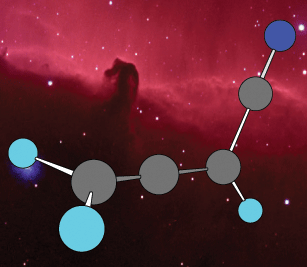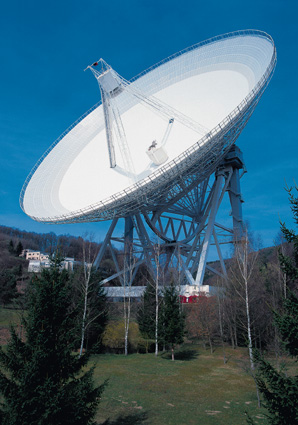The International Astrophysics
Network was established in 1994. It presents a very powerful research
association to predict the formation and actually detect hitherto
unobserved molecules in extraterrestrial environments based on
cutting-edge laboratory crossed beams and surface scattering
experiments combined with electronic structure theory, statistical
calculations, and kinetic models. The prime directive of this network
is to unravel the underlying dynamics and reaction mechanisms on how
complex, (astrobiologically) important molecules are synthesized from
the bottom up via single atoms, radicals, and small molecules in
the interstellar medium, in atmospheres of planets and their
satellites,
in cometary comae, as well as in extraterrestrial ices. This research
holds
also strong links to combustion processes, chemical vapor deposition,
non-
classical organic and organo-metallic chemistry, and to atmospheric
chemistry.
Our network is organized as
follows. The experiments involve reactive scattering studies and employ
a novel crossed beams machine (gas phase chemistry; Kaiser), a recently
commissioned gas phase photodissociation machine (Stranges), and
gas-surface scattering setups (Kaiser/Mason). Both ‘gas phase’ machines
investigate how molecules are formed (crossed beams) and destroyed
(photolysis) in the interstellar medium, planetary atmospheres, and
combustion processes. The surface scattering experiments untangle the
interaction of extraterrestrial ices , carbonaceous surfaces, and
minerals with charged particles, UV/VUV photons,
and atoms.
All experiments are pooled
together with electronic structure calculations and computations of
rate constants to verify elucidated reaction mechanisms theoretically
in collaboration with Bettinger, Head-Gordon, Schleyer, Schaefer,
Mebel, Hanacchi, and Osamura. The potential energy surfaces will be
utilized also to perform dynamics calculations, which will in turn be
compared to the experimental data to bridge the theoretical
understanding of reactive scattering of complex systems with actual
experiments.
These data (rate constants,
branching ratios, reaction products and intermediates) are then
incorporated in collaboration with Herbst into reaction networks
modeling the evolution of interstellar environments (cold molecular
clouds, circumstellar envelopes, star forming regions). Very recently,
a collaboration was also established with Howard, Richter, and Green to
incorporate these results also into cutting-edge combustion chemistry
networks. Since the laboratory experiments predict further the
existence of hitherto unobserved molecules in the interstellar medium
and in planetary atmospheres, these species will be searched for in
those environments in collaboration with Turner and Chin.
The spectroscopic transitions
necessary to carry out the astronomical observations are either taken
from databases, are going to be computed, and will be determined
experimentally (optical and ultraviolet) in collaboration with Salama.
Note that the proposed
experiments also assist an analyses of current and prospective data of
in situ analyses of planetary and satellite atmospheres via space
probes
(Cassini-Huygens; Deep Impact; Neptune Orbiter; Pluto Express) and
remote
sensing spectroscopic observations with telescopes (Stratospheric
Observatory
for Far Infrared Astronomy; Space Infrared Telescope Facility).
This synergistic approach
combines sophisticated laboratory experiments, electronic structure
theory, statistical and quasi classical trajectory calculations,
kinetic models, and actual astronomical observations to address
generalized concepts in understanding the dynamics of elementary
atom-radical and radical-radical reactions
in combustion processes and in extraterrestrial environments
systematically. The unique power of this network to predict and
actually find hitherto
unobserved molecules in astronomical environments was demonstrated
explicitly
in the first astronomical detection of cyanoallene towards the Orion
Molecular Cloud employing the 100 m telescope in Effelsberg (Germany)
and the 15
m dish at SEST (Chile) (Chin, Kaiser). The search for interstellar
cyanobenzene is currently in progress.








